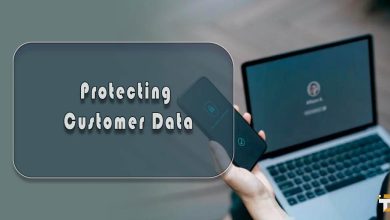Malware Types: Viruses, Worms, Trojans, and Ransomware
Malware, often known as malicious software, is dangerous to the security of personal and corporate data and computer systems. The most prevalent and well-known Malware Types include viruses, worms, Trojan horses, and ransomware. We will go into each Malware Types in this post, looking at their traits, infection methods, and potential effects on data and computer systems. Users can take preventative steps to safeguard their devices and data from these harmful assaults by being aware of the hazards they face.
Viruses
One of the most traditional and well-known forms of Malware Types is viruses. They spread by affixing themselves to trustworthy programs or files and infecting additional files or systems. The virus usually spreads when a user interacts with a virus, such as by opening a corrupted email attachment or installing malicious software from an unreliable source. Once activated, viruses can modify, delete, or corrupt files, disrupt system operations, and spread to other devices or networks. Antivirus software and regular system updates are essential in defending against viruses.
Worms
Worms are self-replicating Malware Types that spreads without user intervention. They exploit vulnerabilities in computer networks, often through email attachments or network shares, to infect other devices. Worms can consume network bandwidth, degrade system performance, and even create backdoors for remote attackers. Unlike viruses, worms can spread autonomously, making them highly contagious and capable of causing widespread damage. Regular system patching and the use of firewalls help mitigate worm infections.
Trojans
Trojans, named after the infamous Trojan horse from Greek mythology, masquerade as legitimate or desirable software to deceive users into installing them. Once inside a system, Trojans can perform various malicious activities, such as stealing sensitive information, logging keystrokes, granting remote access to attackers, or delivering additional malware. Trojans often rely on social engineering tactics or exploit software vulnerabilities to gain access. Maintaining up-to-date security software and exercising caution when downloading or installing unfamiliar software are key defenses against Trojans.
Ransomware
Ransomware has become well-known in recent years due to the havoc it causes to people, businesses, and vital infrastructure. It encrypts files or locks down computer systems, rendering them inaccessible until a ransom is paid to the attackers. It spreads through malicious email attachments, exploit kits, or compromised websites. Attacks with ransomware can potentially cause large monetary losses, data breaches, and operational interruptions. Regular data backups, robust security measures, and user education on safe browsing and email practices are crucial in preventing and mitigating ransomware attacks.
Adware and Spyware (Bonus)
While not considered as malicious as viruses, worms, Trojans, or ransomware, adware and spyware are still Malware Types worth mentioning. Adware displays unwanted advertisements to generate revenue for the attacker, while spyware secretly collects personal information or monitors user activities without consent. Although they may not cause direct harm, adware and spyware can compromise user privacy, slow down system performance, and create vulnerabilities for other malware to exploit. Using reputable ad blockers, regularly scanning for spyware, and exercising caution when downloading free software can help mitigate the risks associated with adware and spyware.
Keyloggers
Keyloggers are Malware Types designed to record keystrokes on an infected system. They can record private data, like passwords, credit card numbers, and private communications, which can be exploited maliciously. Keyloggers can be installed through phishing emails, infected websites, or compromised software. Using virtual keyboards, regularly updating passwords, and being cautious of suspicious links or attachments help defend against keyloggers.
Botnets – Malware Types
A central command-and-control server controls a network of compromised computers, or “bots,” known as a botnet. They can develop when malicious software like Trojan horses or worms infiltrate systems. Spam campaigns, coordinated cyberattacks, and distributed denial-of-service (DDoS) operations use botnets. Protecting devices with up-to-date security software, enabling firewalls, and avoiding suspicious downloads can help prevent botnet infections.
Rootkits
Rootkits are stealthy Malware Types that grants unauthorized access to a system while hiding its presence from detection. They replace or modify critical system files and processes, making them difficult to detect and remove. Rootkits are often installed through Trojan horse infections or by exploiting system vulnerabilities. Regularly scanning for rootkits using specialized security software and keeping operating systems and applications up to date can help identify and mitigate rootkit infections.

Fileless Malware
Fileless malware operates without leaving traces on the infected system’s hard drive. Instead, it resides in the system’s memory or uses legitimate processes to carry out malicious activities. Fileless Malware Types can exploit vulnerabilities in software or use social engineering techniques to gain access. Employing behavior-based antivirus software, keeping software up to date, and practicing safe browsing habits can help detect and prevent file-less malware attacks.
Pharming – Malware Types
Pharming is a cyberattack that sends visitors to phony websites to obtain private data like login passwords or financial information. It typically involves DNS (Domain Name System) cache poisoning or malware infections. Pharming attacks can be prevented using secure DNS servers, keeping the software and firmware updated, and being cautious of unfamiliar websites or links.
Polymorphic Malware
Polymorphic Malware Types is designed to change its code structure or appearance with each infection, making it difficult to detect using traditional signature-based antivirus software. It can evade detection by altering its characteristics, such as file size, encryption, or code structure. Employing heuristic-based antivirus software, using intrusion detection systems, and regularly updating antivirus signatures help combat polymorphic malware.
Mobile Malware
Mobile devices are increasingly targeted by malware. These viruses can be created to send expensive text messages, steal personal information, or even take over the device. Mobile Malware Types can be spread through malicious apps, infected websites, or by exploiting software vulnerabilities. Protecting mobile devices with reputable security apps, only downloading apps from trusted sources, and keeping devices updated with the latest patches and updates are essential safeguards against mobile malware.
Macro Malware
Macro malware exploits macros, scripts used in applications like Microsoft Office, to execute malicious actions. It often spreads through infected email attachments or compromised documents. Once enabled, macros can download and execute additional Malware Types or perform other malicious activities. Disabling macros by default in software, keeping software up to date, and being cautious of enabling macros from untrusted sources can help prevent macro malware infections.
Zero-Day Exploits
Zero-day exploits aim to exploit software flaws that the program vendor is unaware of or that have not yet been fixed. Attackers can use these flaws to set up malware, get access without authorization, or do other harmful deeds. Regularly updating software with the latest security patches, using intrusion detection and prevention systems, and practicing safe browsing habits help mitigate the risks associated with zero-day exploits.
Social Engineering Attacks
Social engineering involves manipulating individuals through psychological tactics to obtain confidential information or gain unauthorized access to systems. Phishing emails, pretexting, baiting, or impersonation are common social engineering techniques that trick users into disclosing sensitive information. Education and awareness training on recognizing and responding to social engineering attacks are crucial in preventing successful malware infections.
Sandbox Evasion
Some sophisticated Malware Types is designed to detect and evade sandbox environments used by security analysts to analyze suspicious files. By evading sandboxes, malware can remain undetected and continue its malicious activities. Employing advanced sandboxing technologies, using multiple layers of defense, and regularly updating security software can help detect and mitigate sandbox-evading malware.
Conclusion
Computer systems and personal data are seriously threatened by Malware Types such as viruses, worms, Trojan horses, and ransomware. Understanding the characteristics and behaviors of these malicious software types is vital for individuals and organizations to adopt effective cybersecurity measures. Employing robust antivirus and anti-malware software, regularly updating software and operating systems, practicing safe browsing and email habits, and backing up important data are essential to safeguard against malware attacks. By staying vigilant and proactive, users can protect their systems, data, and privacy from malware’s pervasive and evolving threat landscape.





